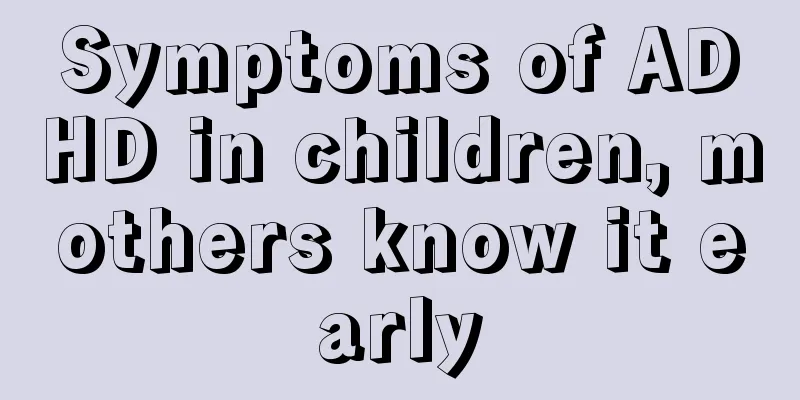What to do if your baby has dandruff

|
Newborn babies will have brown or black dandruff on the top of their heads. This is a very normal phenomenon. Parents must not remove this dandruff with their fingers. When bathing the baby more often, rub it gently and keep the newborn's skin clean. The dandruff will fall off naturally over time. Taking your baby to bathe regularly can promote the breathing ability of the baby's skin and help the baby grow faster.
Babies who are just a few months old will have a thick layer of dandruff with crusts that may be black, yellow or brown on the top of their heads. Sometimes it will even spread to the baby's face, body, or diaper area, resulting in a red, scaly rash that is rough, ugly and difficult to remove. Especially at the baby's front fontanelle, parents dare not touch it easily. In fact, why do babies have dandruff? This is mainly because the epidermal flora of the parents proliferates abnormally in the baby. We know that everyone's skin surface carries a large number of microorganisms. These microorganisms are our normal flora. The epidermis of a newborn baby has not yet formed its own microbial flora. At this time, they can be transmitted to the baby through daily kisses from parents. Cradle cap: The sebaceous glands on the scalp of newborn babies have strong secretory function. If the secretions are not removed in time, they will accumulate together with the dirt on the scalp, and over time a thick gray-white scab will form. This is the cradle cap.Seborrheic dermatitis: When gray-yellow or yellowish-brown greasy scabs and scales of varying thickness appear on the baby's head, we call it "seborrheic dermatitis". Severe cases may affect the eyebrows, nasolabial folds, behind the ears, etc. Sometimes many small red rashes the size of rice grains can be seen on the scalp, and then yellow-red patches form. If it is stained with dust, a thick layer of yellow scabs may form, which may turn black over time and cause itching.
Improper care by parents: Many parents think that newborn babies are still very small and their heads are relatively soft, especially the fontanelle. They are afraid to wash their babies’ heads and dare not do head care, which results in dandruff over time. High-fat diet: Because "dandruff" is a product of the baby's metabolism, if the fat content in the diet of breastfeeding mothers and babies is too high, "dandruff" problems are likely to occur. If the baby's dandruff is severe or accumulates for a long time, it will affect the growth and development of the scalp. In severe cases, it may cause hair loss, ringworm, eczema, etc. |
>>: What are the symptoms of measles in babies
Recommend
How to judge baby enteritis
Enteritis in babies is usually related to rotavir...
What are the symptoms of nasal hypertrophy in children?
Turbinate hypertrophy is a common chronic nasal d...
How to feed frozen milk to babies
Most postpartum women, when their milk supply is ...
What should I do if my baby always bites his lower lip?
Watching the baby grow up healthily must make par...
What should I do if my child’s front teeth fall out? Parents can do this
Children often fall, so it is common for their fr...
Child sweating and coughing while sleeping
In daily life, many babies are prone to sweating ...
7-year-old girl has a painful lump in her breast
Breast lumps are the most typical symptom of brea...
What are the symptoms of ADHD in a four-year-old child?
The physical health of children is an issue that ...
How to correct a child's hunchback
Some children have hunchbacks, and their parents ...
What to do if your child has eczema
Children's skin is sensitive and can be easil...
What to do if children have poor appetite in summer
Children tend to become picky eaters in the summe...
What should I do if a 13-year-old girl has hereditary big toes?
In fact, a disease like bunion is not a very scar...
What to do if your child has a stuffy nose and can't sleep
Many parents will find that their children cannot...
What to do if your child can't sleep well
The healthy growth of children is a topic that ev...
Prevention and treatment of viral infections in children
Viral infection is a relatively serious infection...









